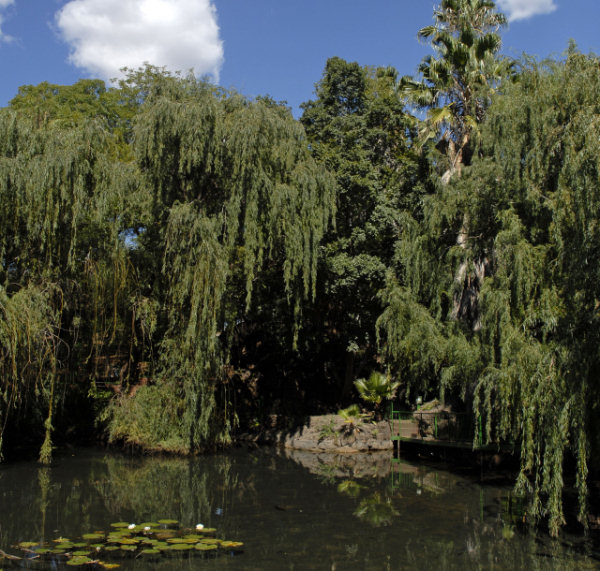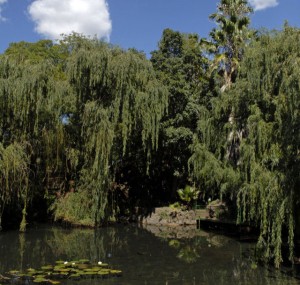Kuruman is famous for the “Eye of Kuruman” (Die Oog in Afrikaans), a fresh water fountain that gushes from a seemingly
barren dolomite rock to deliver 20 million litres of water a day even during the worst droughts. It is the source of the Kuruman river and spills water into two 7km irrigation canals.
The Eye was discovered by Samuel Daniel in 1801 and it was this source of water that led to the establishment of a mission here in the early 19th century, which led to The Eye being described as the ‘fountain of Christianity’. Scottish missionary Robert Moffat, the first person to translate the Bible into seTswana, lived here for 50 years (1820-1870) and built the famous Moffat Church, completed in 1838.
The spring delivers water to 71 000 inhabitants. The water flows from solution cavities in the dolomitic Ghaap Plateau and cracks in the mammoth doleritic dykes and sills that thrust their way into prominence from the earth’s core some 190 million years ago. The spring nurtures an endangered species of cichlid fish.
According to available information The Eye is the biggest natural fountain in the Southern Hemisphere. In the early years the Tswana people christened this fountain Gasegonyane, which means small water calabash with bubbling water.
Kuruman is part of the Kalahari Region and is situated on the N14 some 520km to the east from Johannesburg on the way to Cape Town.






